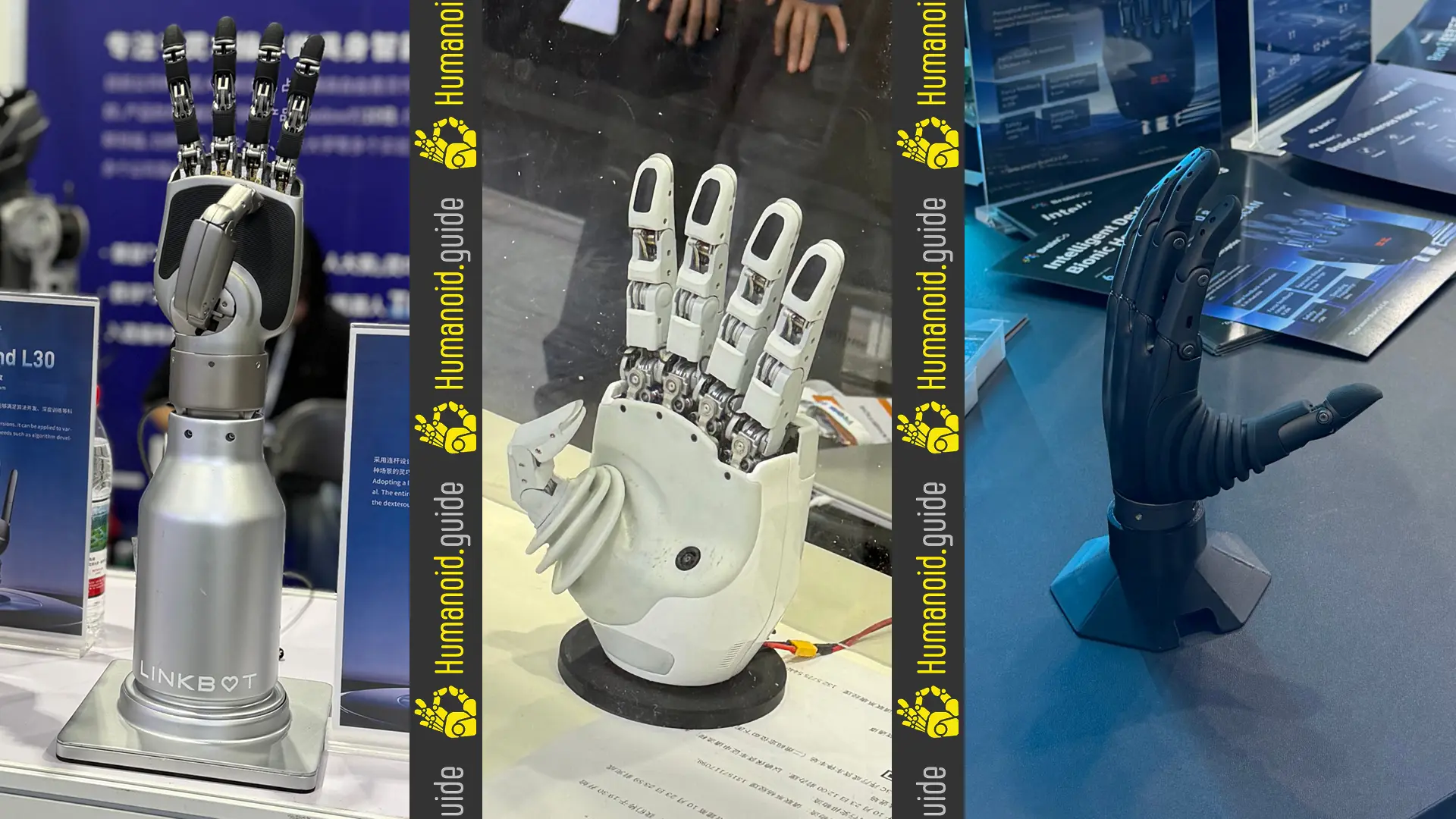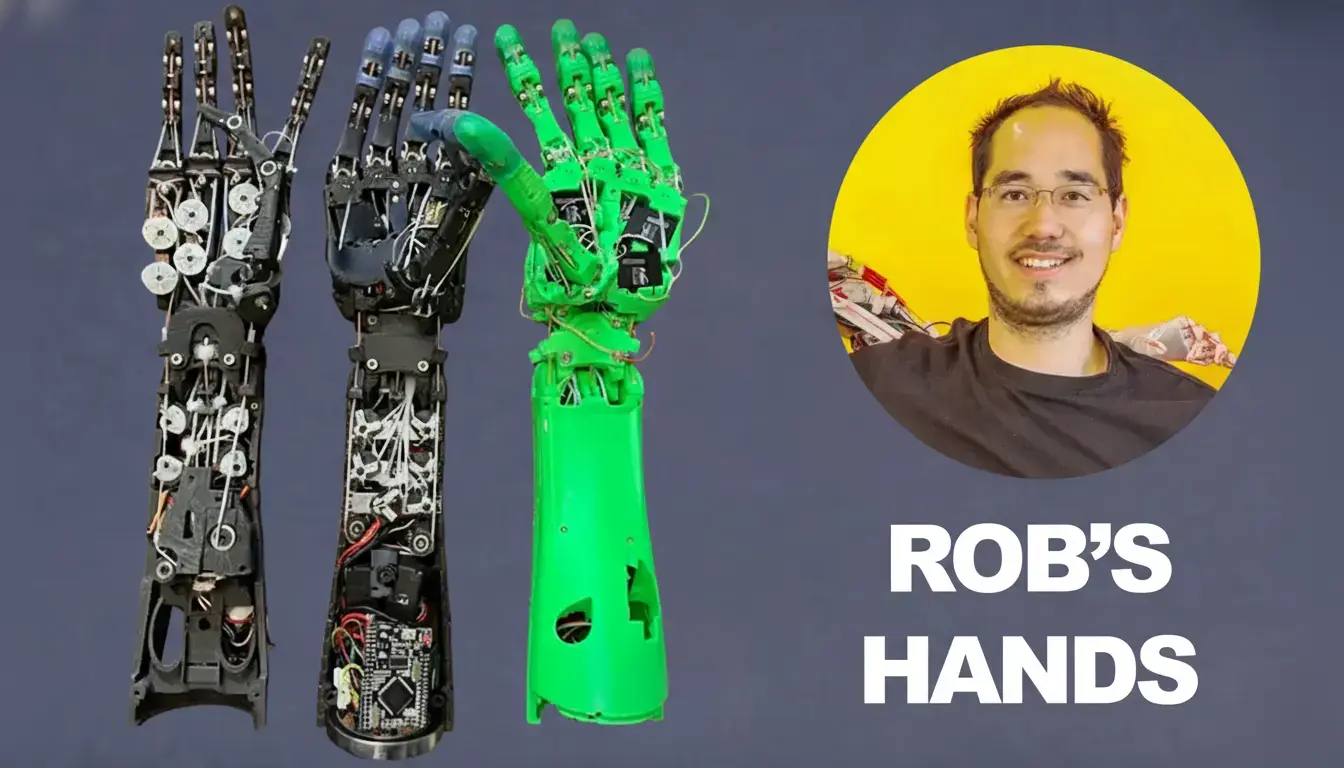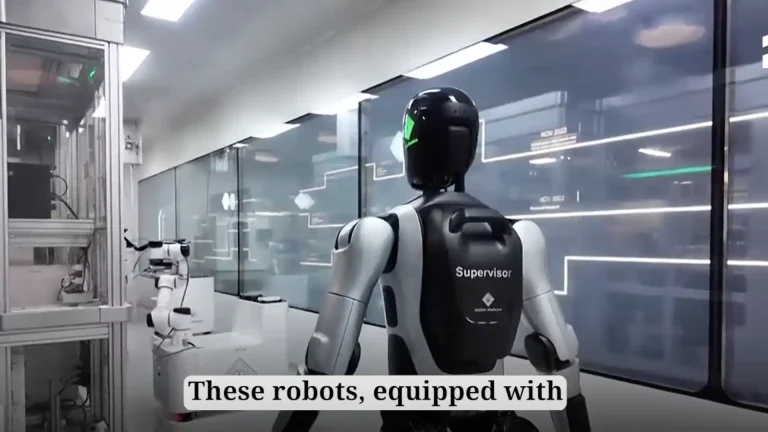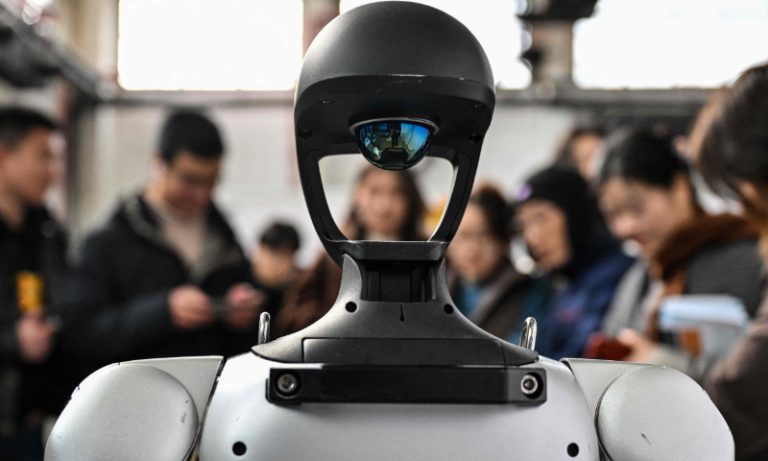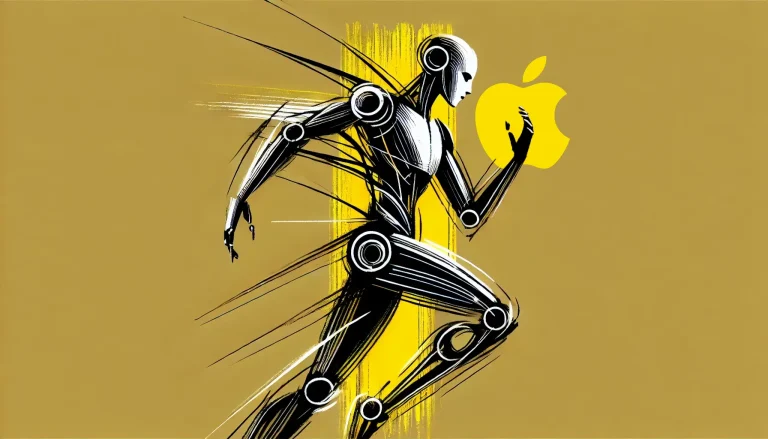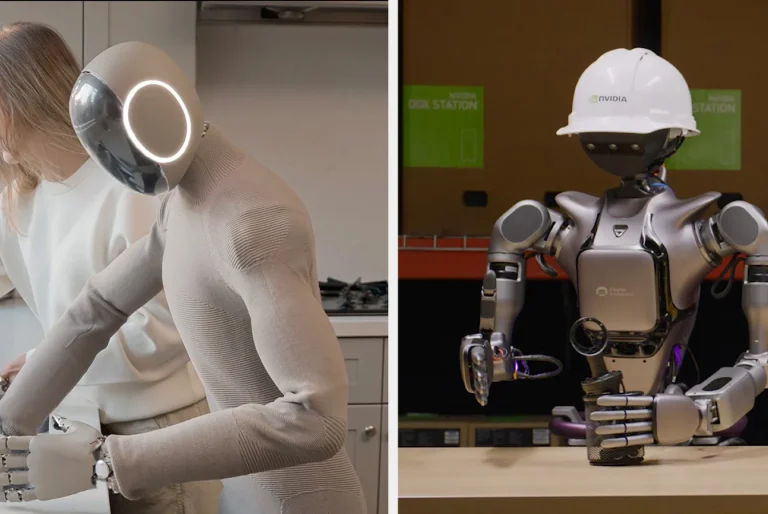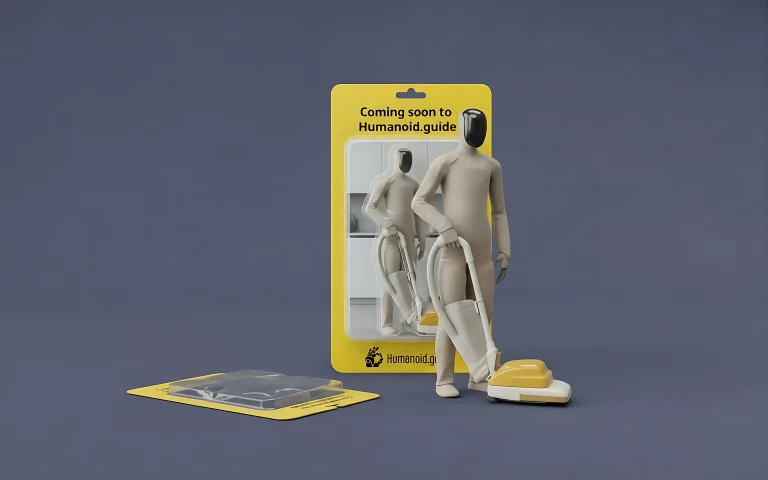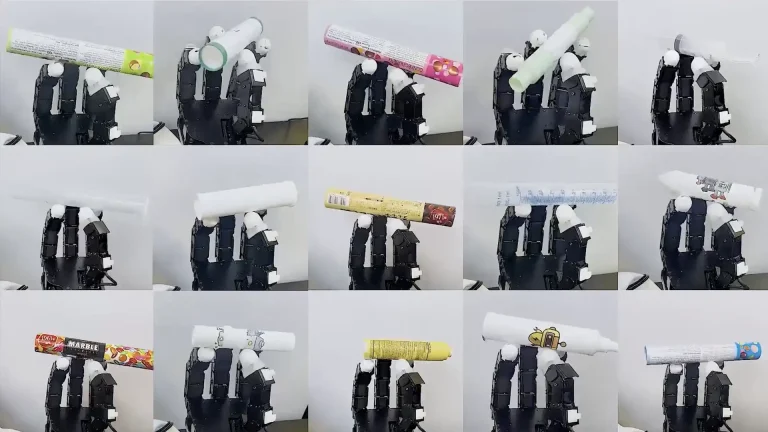Among Hands – Reflections from IROS 2025 #2
You walk into the hall and notice it immediately, the hum of motors powering up, servos twitching, compressed air flowing through tubes. Then you start to spot the hands, one after another. Some are suspended in glass enclosures, others stand on pedestals, a few are attached to half-assembled torsos waiting for a command. One hand grips a cup with obvious caution. Another uses a screwdriver, pauses, adjusts the angle as if analyzing. This scene speaks volumes about how far humanoid technology has come.
2026 Humanoid Robot Market Report
160 pages of exclusive insight from global robotics experts – uncover funding trends, technology challenges, leading manufacturers, supply chain shifts, and surveys and forecasts on future humanoid applications.

Featuring insights from
Aaron Saunders, Former CTO of
Boston Dynamics,
now Google DeepMind
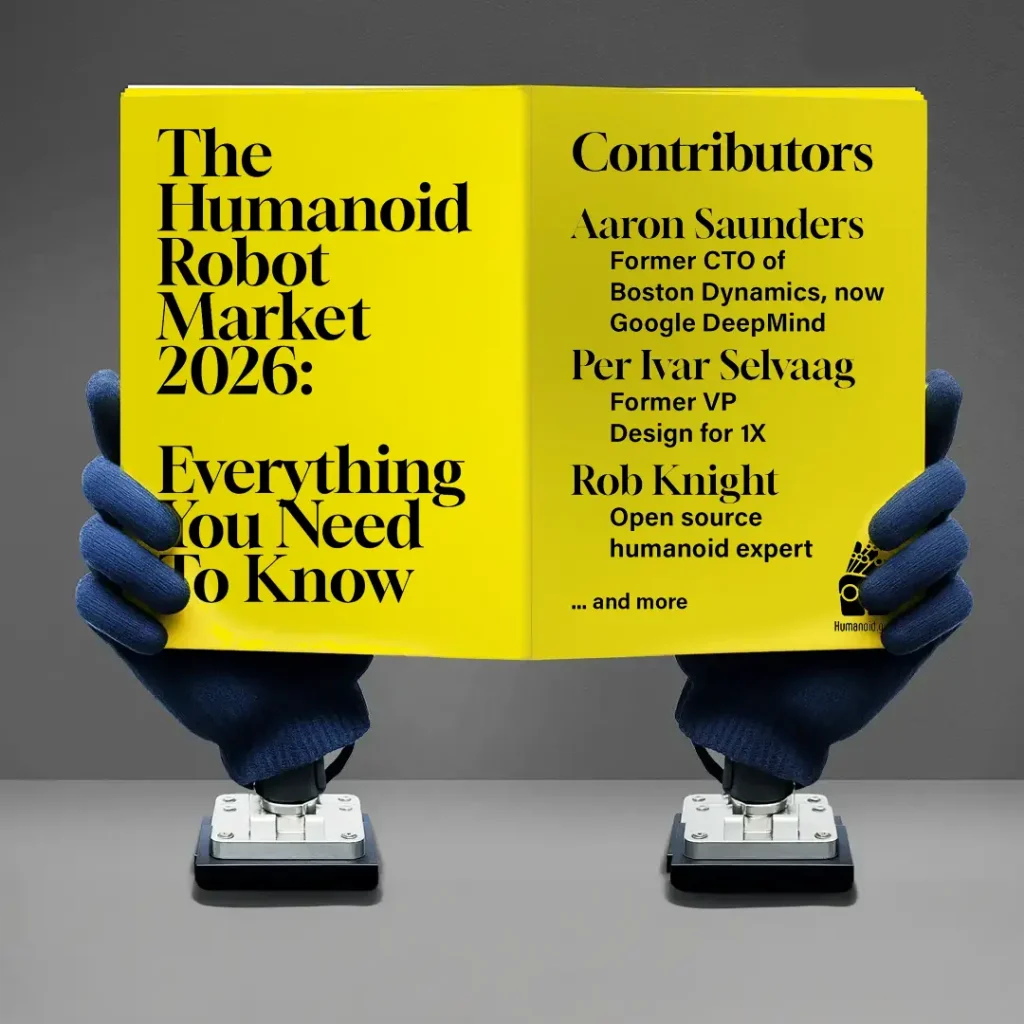
2026 Humanoid Robot Market Report
160 pages of exclusive insight from global robotics experts – uncover funding trends, technology challenges, leading manufacturers, supply chain shifts, and surveys and forecasts on future humanoid applications.
At IROS this year, it’s not the legs that draw the crowds anymore. It’s the hands (Read more about hands here).
A quiet revolution
For two decades robotics has focused on movement: walking, running, climbing, balancing. The breakthroughs have been remarkable but also oddly abstract because they show amazing coordination without real-world context. Then hands changed the game. They make robots engage with the tangible world, and that engagement transforms both machine and environment.
What stands out when you walk among these prototypes is how many design philosophies sit side by side. Some engineers pack the mechanism into the palm: compact, strong, direct. Others shift the burden back into the forearm, with tendons running through narrow channels, mimicking human anatomy. You can almost hear their debates: simplicity vs sensitivity, precision vs grace, reliability vs realism.
A senior engineer nearby whispers that “the hand is the slowest part to evolve and the fastest to fail.” He is right. The hand is where everything converges: soft yet strong, complex yet intuitive, capable but always vulnerable.
Lessons from experience
In the Humanoid Robot Market Report 2026, one contributor remarked: “Hands are the hardest part of the hardest challenge – a game you can never fully complete.” That idea sticks with me as I watch these demos. That perspective runs through nearly every booth here: engineers no longer ask how high a robot can jump, they ask how gently it can lift.
The former CTO of Boston Dynamics noted that “a single human hand has more degrees of freedom than the rest of the robot, packed into a fraction of the space.” Looking around you see those trade-offs everywhere: a hand that looks elegant may lack torque; another that can crush a brick might drop a strawberry. Perfection is still out of reach, but the tiny, precise tremors before every successful grasp hint at real progress.
The art of control
What grabs me most isn’t the hardware, even though it could fill a museum, but the control. These hands are learning through data, not design. Every movement is recorded, analysed, replayed and corrected. Thousands of tiny mistakes teach a robot the difference between a slip and a squeeze.
In one corner a demo shows a pair of robotic hands folding a towel. They miss, reset and try again. The crowd chuckles quietly, but there’s respect in the laughter. The engineers nearby aren’t embarrassed, they’re proud. Every failed fold becomes part of a dataset that will one day make the gesture effortless.
That patience defines this new phase of robotics, one focused less on showy videos and more on repetition, refinement and realism. We’ve entered the era of tactile learning.
From metal to meaning
There’s something almost emotional about watching a machine imitate touch. Not just movement, but intention. A robot that waits half a second before closing its grip feels more alive than one that acts instantly. That pause, that fraction of simulated thought, draws us in.
The Humanoid Report notes that hands are becoming the interface between digital thought and physical reality. It sounds poetic, but standing here it feels literal. Each fingertip turns computation into contact. Each grasp turns data into consequence.
And somewhere in that process we get a glimpse of a new kind of intelligence, one measured not in gigaflops but in sensitivity.
Sensing the world
One display shows a translucent polymer glove wired with sensors fine enough to detect the texture of paper. When it glides over a strip of velvet a graph flickers on the screen in delicate waves. Someone behind me whispers that “It’s feeling.” It’s easy to underestimate how radical this is. For decades robots have seen the world through cameras. Now they are beginning to feel it. Tactile sensing is the missing sense that turns a manipulator into a collaborator. Combined with embodied AI, systems that learn not just from code but from contact, this will change everything from assembly lines to assisted living. A decade ago this would have been science fiction. Today it is a line in a spec sheet.
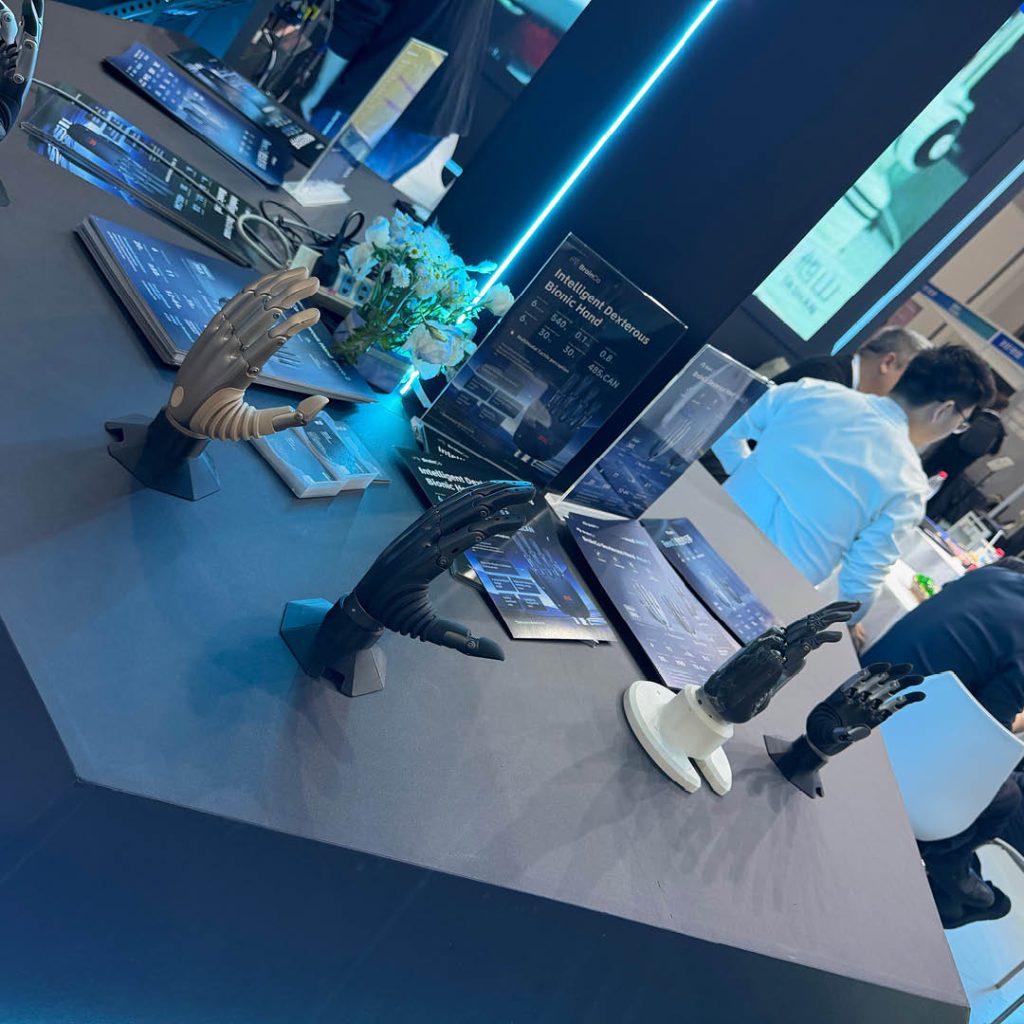
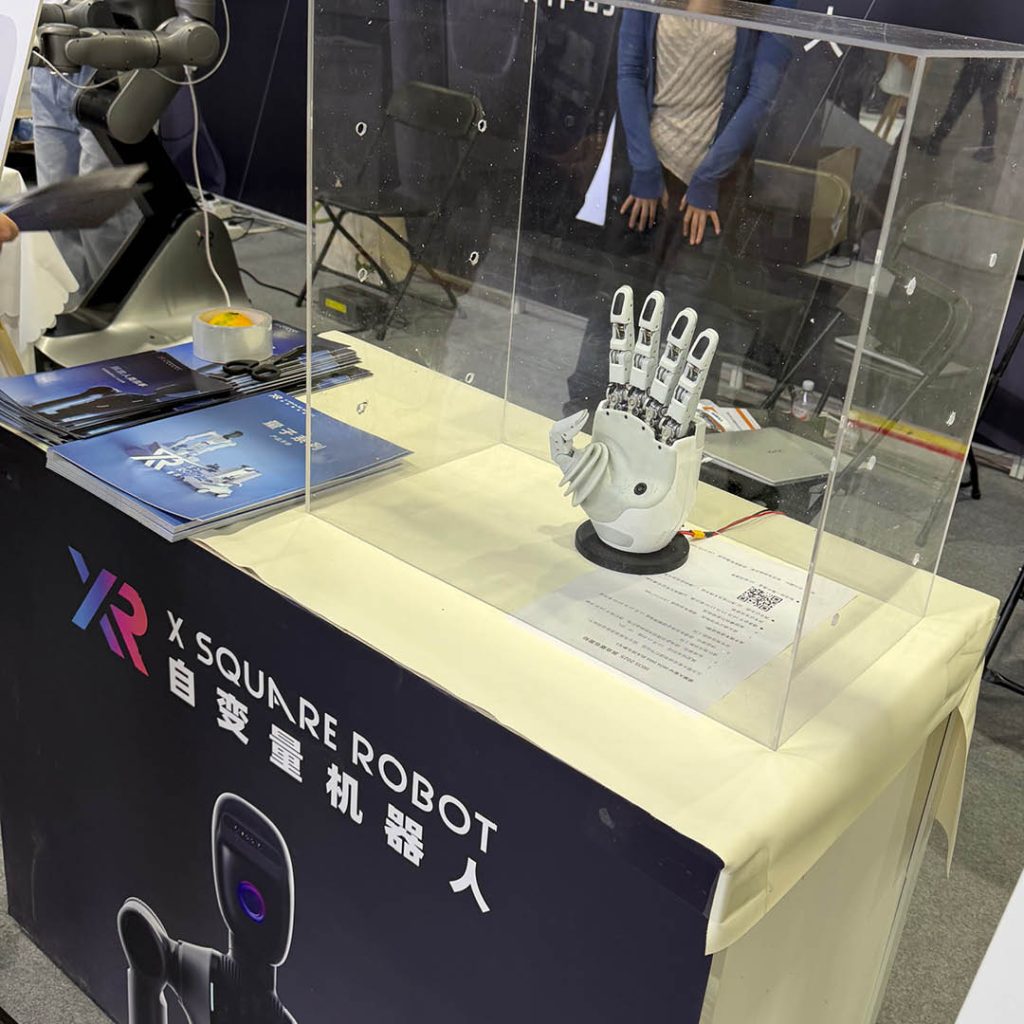
The long road to reliability
Still reality is stubborn. These robotic hands are fragile. Cables snap, motors heat up, sensors drift. As one researcher put it “The physics doesn’t scale like the demos do.” The Report already flagged this, pointing out that reliability cost and safety remain the true bottlenecks. You can almost feel those constraints in the air, like the smell of solder in a test lab. And yet there is optimism too. Every small fix, every overnight iteration brings the lab a little closer to the living room. The engineers know this. Their prototypes may still stumble, but they do so with purpose. Each failure is a rehearsal for the day a robot hand will pick up your coffee mug without you even noticing.
The human parallel
Watching these mechanical fingers move makes me think of our own hands and how they shaped our evolution, from tools to art, from writing to building. The hand is not just a limb, it is how humanity learned to externalize thought. Now we are teaching machines the same trick. That might explain why so many people at the tech expo look strangely emotional when a robot succeeds in something simple, like tying a knot, stacking blocks, or holding a pen. Those gestures carry echoes of ourselves and they remind us that technology, at its best, is an act of reflection. One developer tells me quietly, “It’s not about making robots like humans, it’s about making humans more aware of what we do naturally.”
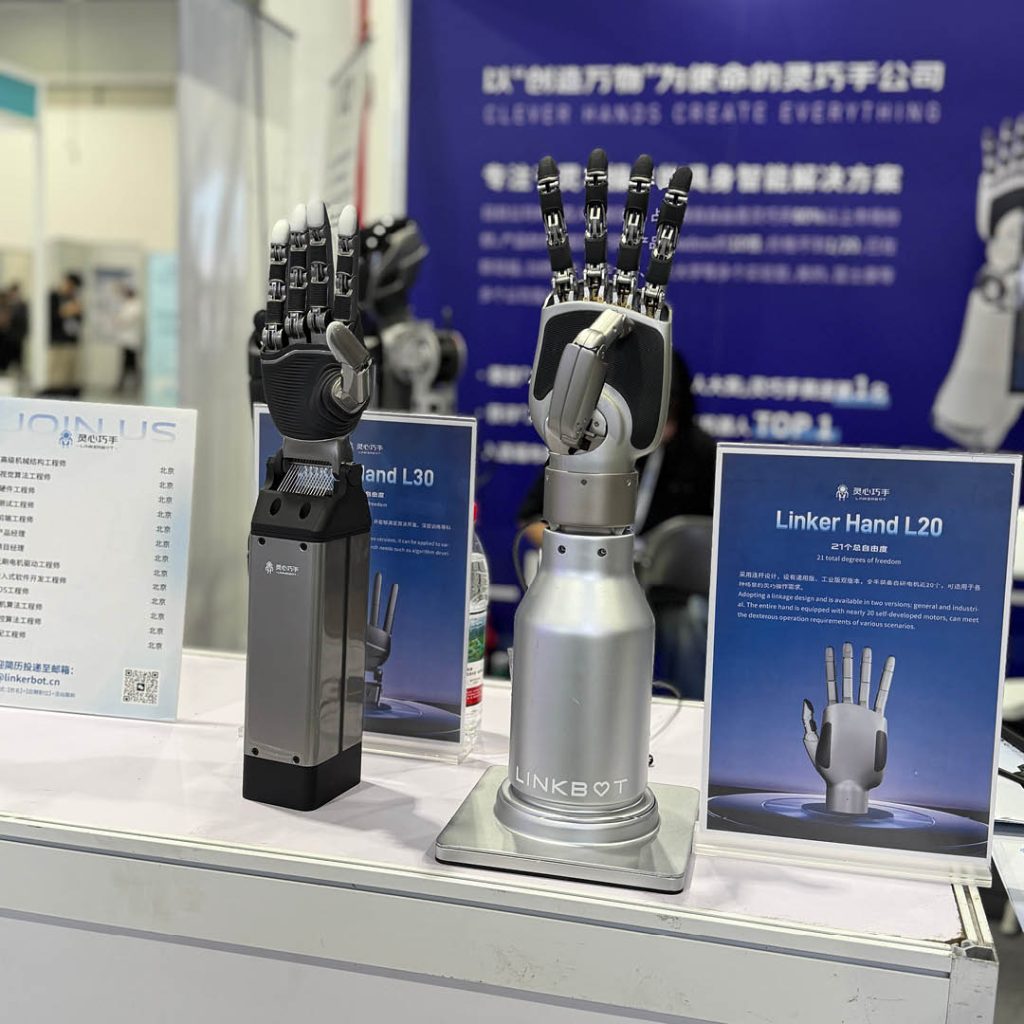
What lies ahead
If you read between the lines of this year’s market forecasts the pattern is clear, the next great leap for humanoids will not come from faster legs or cheaper batteries, it will come from hands that are reliable enough, sensitive enough and affordable enough to enter daily life. That’s when the humanoid shift truly begins, when robots move from mobility to manipulation, when they don’t just exist in our spaces but participate in them.
Walking out of the exhibition I pass one last demo, a robot hand waves, clumsy but sincere. It’s a small gesture, easy to overlook. But in it I see the arc of an entire industry, the movement from command to connection. Maybe that is what this field is really about, not teaching machines to act like us, but teaching us to recognize ourselves in what they learn. And as the hall lights dim the last servo slows to silence. Somewhere behind me a hand rests open, waiting for its next instruction or maybe just for someone to reach back.
Ready for the full hands on overview?
Humanoid Guide just launched the 2026 Humanoid Robot Market Report. Inside, you’ll find the latest research, breakthroughs, and products driving the next frontier in humanoid robotics, focusing on dexterous robotic hands. A dedicated chapter explores why hands represent the final and most challenging step toward unlocking real-world utility for humanoid robots.
The report features insights from leading experts across the open source community, 1X Technologies, Boston Dynamics, and other industry pioneers, offering a deep look at how grasp, touch, and fine manipulation are shaping the humanoid revolution.
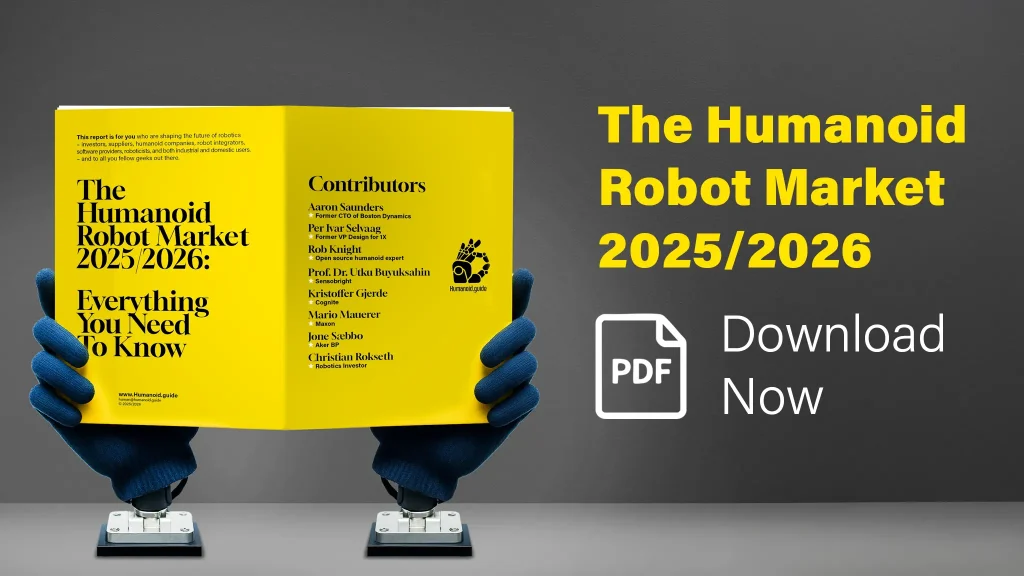
The 2026 Humanoid Robot Market Analysis is the most comprehensive view and analysis on the humanoid market to date. 170 pages with deep insights into all the aspects surrounding the humanoid robotics industry.

